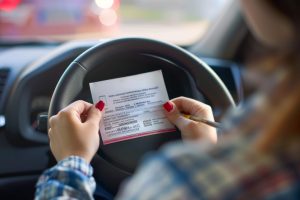The full G driving test is the last step in Ontario’s graduated licensing system. Once you pass, you’ll get your full G licence and have fewer restrictions than G1 and G2 drivers. That means no more zero-tolerance alcohol rules or limits on night driving with young passengers. By the end of this post, you’ll know everything you need to pass the G road test and understand the benefits of getting a G license in Ontario.
Eligibility Criteria for the Full G Driving Test
Before you can take the Full G driving test, you need to meet a few important requirements. To apply for the Full G licence test, you must:
- Hold a valid G2 licence for at least 12 months.
- Be at least 16 years old (this was already covered when you got your G1 test).
- Have some experience driving on highways with speed limits of 80 km/h or more.
When you’re ready to schedule your G road test, you’ll need your driver’s licence number.
It’s also important to know how long you need to wait between the G2 and G test. You have to wait at least 12 months after getting your G2 licence before you can take the G test. During this time, it’s a good idea to practice driving as much as you can, especially on highways and in different conditions.
With the right preparation and by making sure you meet all these requirements, you’ll be ready to pass your Full G test and enjoy unrestricted driving in Ontario!
How to Book the G Road Test in Ontario
Booking your G road test is easy! Here’s a step-by-step guide to schedule your G test online:
- Go to the DriveTest website.
- Click on “Book a Road Test” and enter your G2 licence number.
- Choose your preferred test centre and date from the available options.
- Pay the fee of $91.25 using VISA or MasterCard.
- You can book your test up to 24 hours in advance.
There are many DriveTest centres across Ontario where you can take the G test. You can easily find one near you by searching online. Test availability might vary depending on the location and time of year, so it’s a good idea to book early.
The fee for the G test is $91.25 per attempt. If you need to cancel or reschedule, make sure to do so at least 48 hours in advance to avoid penalties. You can reschedule online or by visiting a DriveTest centre.
Preparing for the G Driving Test
Before heading to the test centre, make sure you have everything you need for a smooth experience. Here are the essential documents to bring on test day:
- Valid G2 Licence: You must have your G2 licence with you; without it, you can’t take the test.
- Declaration of Highway Driving Experience: This form confirms that you’ve driven on highways at least five times in the past three months.
- Proof of Vehicle Insurance and Registration: The car you use must be legally insured and registered in Ontario. Make sure to have these documents in the vehicle.
- Payment Receipt (if applicable): If you paid for the test online, bring a copy of the payment confirmation.
Also, make sure your car meets the vehicle requirements for the G road test. Here’s what you need to check:
- Good Working Condition: Your vehicle must be in safe and working order. This includes working brakes, lights, signals, mirrors, and windshield wipers.
- Valid Registration and Insurance: Your car needs to be legally registered and insured in Ontario.
- Full Fuel Tank: Make sure your vehicle has enough fuel for the whole test.
- Clean and Presentable: While it’s not required, a clean car can leave a good impression!
What to Expect During the G License Test
The G driving test usually lasts between 30 to 40 minutes and covers different driving situations to ensure you’re fully prepared, especially for highway driving. Here’s what the test will include:
- Highway Driving: You’ll need to merge onto the highway, drive at the correct speed, change lanes, and safely exit. This is a key part of the test, checking how well you handle high-speed traffic.
- Lane Changes: The examiner will ask you to change lanes a few times. They’ll be watching to see if you signal, check your blind spots, and keep a safe distance from other cars.
- Parallel Parking: You’ll need to parallel park in a tight space, making sure to signal and check your surroundings.
- City Driving: You’ll drive through intersections, follow traffic signs and signals, make turns, and navigate residential and business areas.
- Emergency Stop: The examiner may ask you to do a quick roadside stop to see how you react and safely return to traffic.
- Three-Point Turn: You’ll also be asked to perform a three-point turn, showing that you can control the car in a small space.
During the test, examiners will assess:
- Proper Lane Use: Are you staying in the correct lane and following road markings?
- Observation Skills: This includes using mirrors and checking blind spots, especially when merging or changing lanes.
- Speed Management: Are you driving at the right speed for the conditions, including adjusting in school zones and on highways?
- Following Distance: Keeping a safe gap (3 seconds) between your car and others, especially on the highway.
- Smooth Acceleration and Braking: The examiner will look for smooth driving, avoiding sudden stops or jerky starts.
- Defensive Driving: Being aware of potential hazards and taking steps to avoid them.
The Day of Getting a G License: What You Need to Know
Taking care of your mental state is just as important as preparing your car for the G test. Be sure to avoid any mistakes when taking the G driving test. Here are some tips to help you stay calm and confident:
- Stay Calm and Focused: Remember, the G test is based on skills you’ve already practiced. Focus on driving, not on worrying about the result.
- Positive Visualization: Imagine yourself confidently completing the different maneuvers.
- Deep Breathing: Take a few deep breaths before the test to relax and ease any anxiety.
- Practice: Try driving the test route or similar roads beforehand to get comfortable with the area.
If something unexpected happens on test day, stay calm and follow these steps:
- Running Late: Call the test centre right away. They may offer a short grace period or help you reschedule if needed. If you’re too late, you might lose your appointment.
- Car Trouble: If your car breaks down, you’ll need to reschedule the test. Your vehicle must be in good working order for the examiner to proceed.
Final Tips
With the right mindset and preparation, you can approach the G driving test with confidence. Make sure you’ve practiced enough, reviewed the test requirements, and have everything in order on the day of your test. Remember to stay calm, focus on what you’ve learned, and trust your driving skills. Passing the G test is an important step toward gaining full driving privileges in Ontario, and with the right preparation, you’ll be ready to hit the road with confidence!
FAQs
The G road test typically lasts 30 to 40 minutes. It includes highway driving, lane changes, parallel parking, and various city driving maneuvers.
Yes, you can take the G test with a rented car, but you must ensure that the rental company allows the vehicle to be used for a driving test and that it is properly insured and registered. Make sure to bring the rental agreement and proof of insurance on test day.
If the weather conditions are severe (e.g., heavy snow, ice, or flooding), the test may be rescheduled by the DriveTest centre. You will be notified in such cases. If the weather is manageable, the test will likely go ahead, and you will be expected to adjust your driving to the conditions.
Yes, many drivers choose to use their driving instructor’s car for the G test. Instructors’ cars are often equipped with dual controls, and the instructor may ensure the vehicle is in proper working order for the test.
There is no limit on the number of times you can fail the G road test. However, after each failure, you must wait at least 10 days before retaking the test and pay the test fee again.
To take the G test, you must be at least 16 years old (this is the same age requirement for obtaining a G1 license). Additionally, you must hold a G2 license for at least 12 months before attempting the G test.





